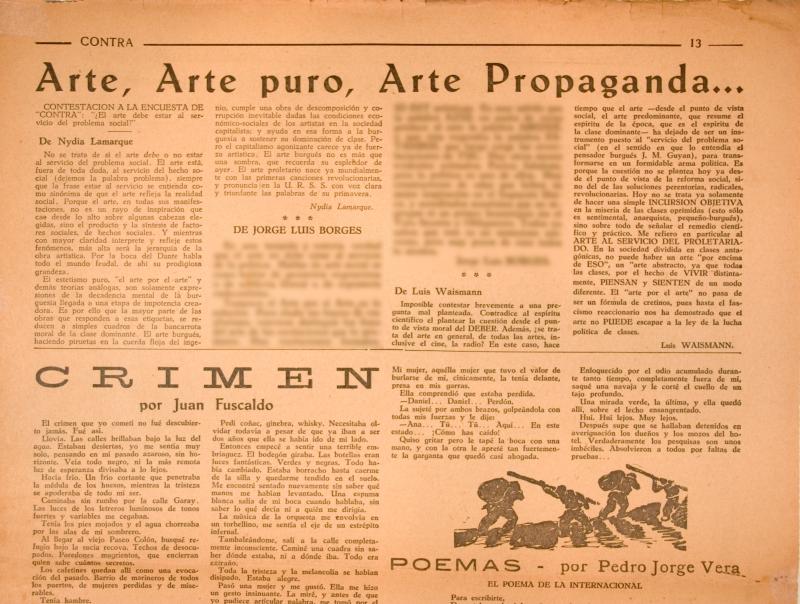Having been expelled from the United States, David Alfaro Siqueiros (1896–1974) traveled to Montevideo in February of 1933, and by the end of May in that same year, he had established himself in Buenos Aires. In the River Plate, Siqueiros experimented with technique and presented arguments based on the contents of his lecture Los vehículos de la pintura dialéctico-subversiva (The Vehicles of Dialectical-Subversive Painting), which he had developed while in the United States.
This document is part of a group of articles published in Contra. La revista de los francotiradores [Against: The Snipers’ Magazine]; the publication was run in accordance with the cultural directives of the Communist Party by poet Raúl González Tuñón, who was not officially affiliated with the party. As such, Contra functioned as a leftist publication that stimulated the militant debate in both the literary and political avant-gardes. The magazine was published between April and September of 1933, approximately the months that Siqueiros spent in Buenos Aires, whose presence was central to the publication. The majority of its collaborators had worked on Crítica.
This document forms part of a subgroup of documents published in the magazine Contra on the survey “Should art serve social problems?” Nydia Lamarque was an intellectual affiliated with the Argentinean Communist Party and a prominent translator of French literature, in particular the work of Charles Baudelaire. In 1933 she served as president of the Argentinean Antiwar Committee and organizer of the Latin American Antiwar Conference (March 1933), an early effort of the River Plate Antifascist Front for Peace. Luis Waismann, Jorge Luis Borges, Nydia Lamarque, Oliverio Girondo, and Cayetano Córdova Iturburu responded to the survey. [See documents 733324, 730272, 730253, 733529, and 763591]





